Palm Springs is an oasis for tourists, but not for the area's majority low-income students
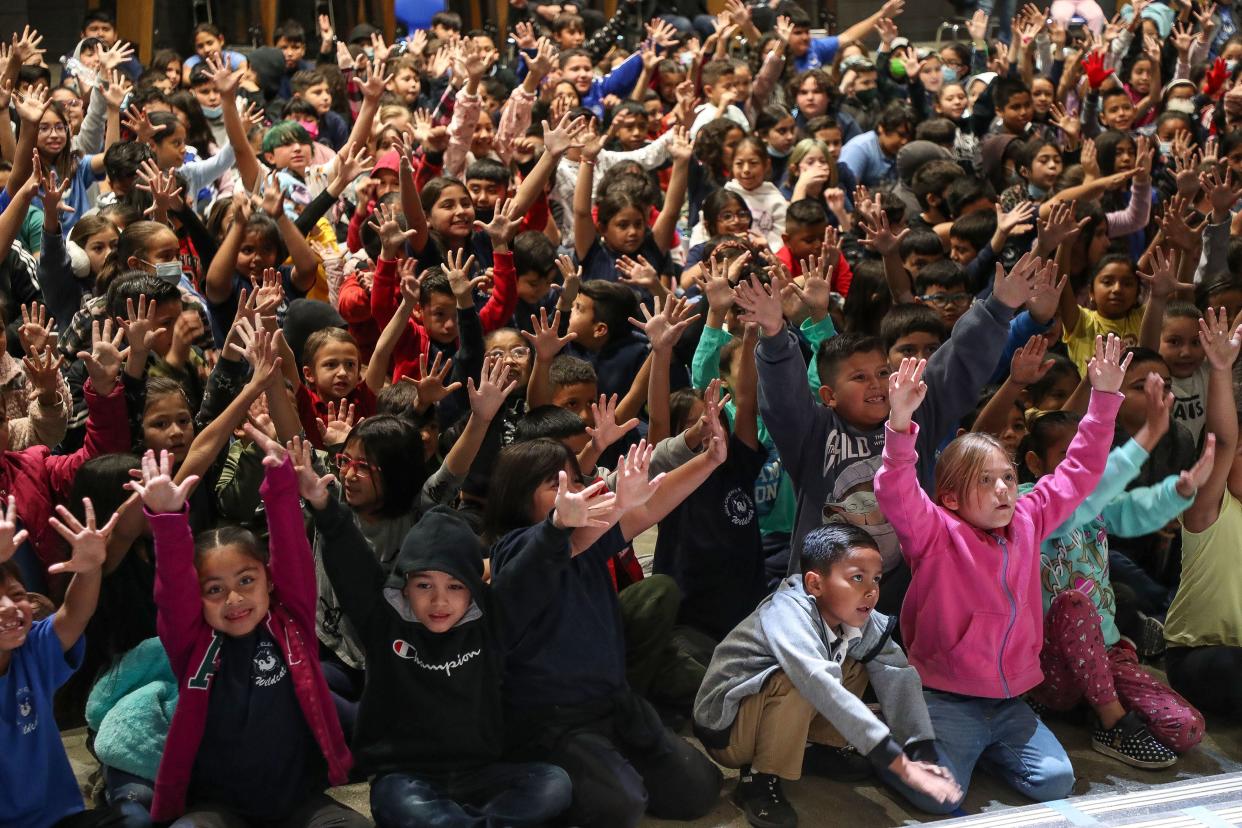
What comes to mind when you think of greater Palm Springs?
Posh hotels? Lush country clubs? Bachelorette parties, drag shows and big-ticket music festivals?
For tourists, second homeowners and retirees, the Coachella Valley leans into its image as a desert oasis. For many local youth, however, the glamorous vision is a mirage. Palm Springs Unified School District serves a higher proportion of socioeconomically disadvantaged children than every other midsize or large school district in the state of California.
Nearly 20,500 of the district’s 21,000 students — 97.5% of them — qualify as socioeconomically disadvantaged, according to state data. The district includes the cities of Palm Springs, Cathedral City, Desert Hot Springs and Rancho Mirage, as well as other, smaller communities.
The California Department of Education defines a socioeconomically disadvantaged student as one who is either in foster youth, classified as an English learner or eligible for free or reduced price meals under the National School Lunch Program. About 29% of PSUSD students qualify as English learners — students who are unable to communicate fluently or learn effectively in English, who often come from non-English-speaking homes and backgrounds. About 1% are foster youth. A vast majority of them are low-income.
“Because Palm Springs has a world-class brand, people who might not be familiar with our community might think that it's all people who are wealthy,” said Palm Springs city councilmember Christy Holstege. “But that is, in fact, not the case. We have a large proportion of our community who are working poor and from more marginalized backgrounds.”
Holstege said the city aims to assist those people by creating affordable housing, attracting industries with paying jobs and contributing to economic development for the region.
Still, one in 10 children enrolled in Palm Springs Unified is considered homeless by the state. That means they “lack a fixed, regular and adequate” nighttime residence. They could be sharing a dwelling with other families or living out of a motel, trailer park or vehicle. In a related trend, the number of unsheltered people has risen not only in Palm Springs, but across the Coachella Valley.

It’s a troubling statistic for any place, especially one renowned for second home ownership.
A tale of two valleys
Nearly 70,000 single family homes and condos in the valley are owned by people who do not use them as their primary residence. They are investment properties or remain vacant for part of the year.
Yet, from 2010 to 2018, the valley combined to build just 38 units of affordable housing annually, according to Lift to Rise, a nonprofit focused on housing and economic mobility in the area. That's 38 units a year in an area with upwards of 370,000 permanent residents.
Meanwhile, the median household income across the valley fell between 2010 and 2020 from $62,500 to $56,200, according to census data. That’s about 30% less than the statewide median household income of around $80,000. It’s also barely more than half of the region’s average household income of over $100,000, which indicates a severe degree of wealth inequality.
Median household net worth in the region’s poorest city, Desert Hot Springs, is just more than $18,000. Median net worth is about 55 times greater in the valley’s richest city, Indian Wells, according to census data collected by the Coachella Valley Economic Partnership.
The population in Indian Wells, however, is small and aging. In Desert Hot Springs, it’s young and growing. Indian Wells — median age 67 — has fewer than 5,000 residents and just one public school. It’s aptly named Gerald Ford Elementary, an homage to a bygone era. Gerald Ford Elementary is part of Desert Sands Unified School District, which also includes Indio, La Quinta and Palm Desert. Even Desert Sands, the most affluent of the valley’s three school districts, serves 77% socioeconomically disadvantaged students, higher than the Riverside County average, 73%, and the state average, 64%.
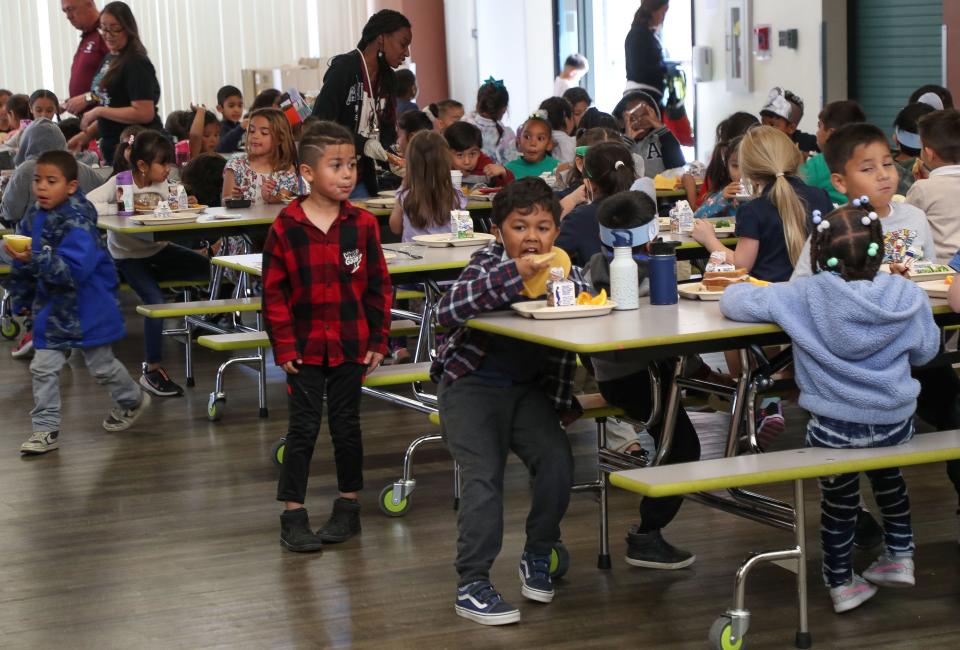
On the east end of the Coachella Valley, more than 15,500 children out of 16,800 served by Coachella Valley Unified School District qualify as socioeconomically disadvantaged. CVUSD’s proportion of such students — 93.7% — ranks fifth in California among school districts with more than 10,000 students behind only Palm Springs, Paramount, Lynwood and Compton unified school districts.
Why does the valley have so many disadvantaged youth?
“Why are there so many kids below any line of poverty that you draw?” Lift to Rise Founder and CEO Heather Vaikona asked rhetorically. “It's because we live in a very exploitative, hospitality service (-driven) economy that is predicated on the labor of low-income people of color, who are not paid enough money to feed their children or stay housed. That’s it. There's not really another way around it.”
Of course, it’s unfair to place the onus on a single industry. Agriculture, healthcare and retail play a major role in the valley’s labor force and also notoriously pay low wages to many workers.
But tourism is the biggest industry in greater Palm Springs. The top employers in the region are restaurants, casinos and hotels followed by hospitals and school districts. Tourism supports one in four jobs in the region and contributes about $8.7 billion to the region’s economy. But how much of that money is trickling down to the workforce?
While greater Palm Springs is a vacationers’ paradise, it’s a tough place to eke out a living for working families, and it’s only getting harder. Wages are stagnant and rent is rising. Demand for housing is increasing faster than supply. On top of that, inflation is not only driving up the cost of construction, but it’s also raising the “cost of existing,” Vaikona said.

“What people want from the Coachella Valley is rest and relief, but that rest and relief is not afforded to the people who drive the economy,” she added.
“It is evident that we have a housing crisis in our valley,” CVEP analyst David Robinson wrote in an essay last year. “Low- and middle-income workers are being squeezed out of the rental market. Our local hospitality and leisure-focused economy depends upon these workers.”
Visit Greater Palm Springs, the official marketing agency for the Coachella Valley, acknowledged the industry has a role to play to support its workforce.
“We recognize that to sustain hospitality jobs and the visitor economy in our region, we need to invest in our workforce, creating and growing a talent pipeline of hospitality leaders locally,” Lauren Bruggemans, VGPS director of sustainability and community engagement, wrote to the Desert Sun. “We work on a number of initiatives to help connect young people to opportunities and pathways in our industry.”
Bruggemans cited partnerships between hospitality employers and local schools that lead to careers in management, including programs with Cal State University San Bernardino, College of the Desert, Coachella Valley High School and various nonprofits. The average annual salary for managerial positions in the local hospitality industry can range from $70,000 to over $140,000, according to a Visit Greater Palm Springs study.
Bruggemans also noted that the taxes that visitors contribute to the local economy support services for Coachella Valley residents including police and fire, public parks and public facilities. “In the Coachella Valley, each household would need to pay an additional $5,000 a year to benefit from the same level of city services that visitor taxes support,” Bruggemans said.
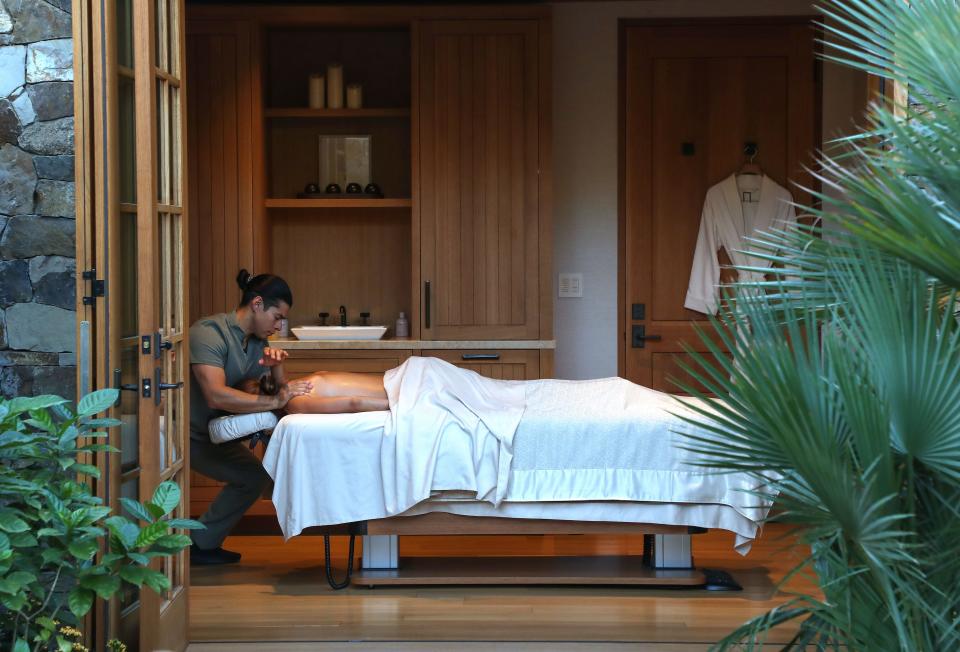
Yet, in many parts of the Coachella Valley, at least one third of families are paying 50% of their income on rent alone. The cost of rent in a majority of Coachella Valley cities grew between 45% and 55% from 2019 to 2022. Over the same time period, hourly wages increased by an average of only 14% — barely keeping up with inflation.
Vaikona says it's hard to speak plainly about poverty in the valley because the truth clashes with the “common narrative” about its leisurely allure. “Sometimes the truth can be crippling for folks because it seems so overwhelming, and it's really hard for all of us to consider our own culpability in an exploitative system," she said.
When the valley’s image isn’t reality
At times, the valley’s well-manicured brand masks the reality of desert living like its green golf courses hide the underlying drought-parched soil.
When Abi Garcia went to University of California San Diego after graduating from Desert Hot Springs High School, she had a hard time describing her hometown to people.
Nobody knew where Desert Hot Springs was. Nobody had heard of the Coachella Valley. But most people knew Palm Springs and Coachella (as in the iconic music and arts festival, not the city).
“People had very specific ideas of what the valley is composed of,” Garcia said. “And I'm like, no. I don't even play golf.”

Country clubs, hotels and music promoters spend millions of dollars a year to craft a highly marketable image of luxurious desert living. The Indian Wells Masters tennis tournament literally calls itself “tennis paradise.”
CVEP markets the Coachella Valley as “the ultimate work/play destination” with an “idyllic quality of life” — a “sweet spot in Southern California.”
“The region offers unparalleled quality of life, a ready workforce and affordability,” it claims in a pitch to entrepreneurs. “Whether starting a new business or relocating an existing one, this is the land of opportunity.”
Opportunity exists. It’s just hard to find.
“Moving to San Diego was eye-opening and a little sad to see some of the opportunities that we just don’t have in Desert Hot Springs,” Garcia said. “One of the first people that I met at UCSD was telling me how they went on a trip to Costa Rica through a program that they did, and I couldn’t even imagine having those types of opportunities.”
Garcia is an outlier at Desert Hot Springs High, which consistently sees the smallest percentage of its students apply to UC schools out of every public high school in the desert.
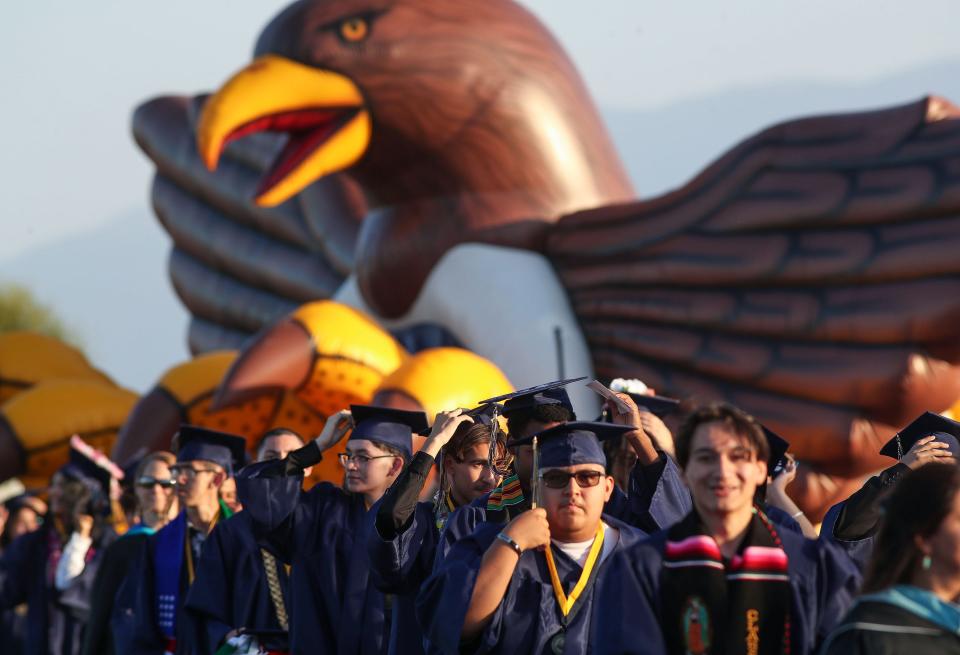
One in five students drops out of Desert Hot Springs High School.
“From my freshman year to graduation, we lost a lot of students,” Garcia said. “Where did they go? You don’t really hear what happens to the people who just disappear one day.”
Through several interviews with Desert Hot Springs High students and alumni, the Desert Sun learned many students would like to see their school dedicate more time to mentorship and college readiness. For example, Suraiya May, a rising junior, wants to attend the University of Pennsylvania because that’s where her third grade teacher — one of her earliest academic mentors — attended. But most Desert Hot Springs students don’t have that sort of access to Ivy League alumni.
“Opportunity is there if you’re willing to grab it and look for it,” said Desert Hot Springs city councilmember Gary Gardner. “I don’t think it’s going to come to you on a silver platter. I think, where the biggest impact can be made is by helping kids find various paths. But if you don’t know the path is there, then you don’t know what opportunities lay ahead of you.”
Part of the problem is a lack of exposure to higher education. Although Cal State San Bernardino has a satellite campus in Palm Desert, there are no standalone universities in the Coachella Valley. Just one community college — College of the Desert — serves a student body from an area over 4,000 square miles large — more than twice the size of Delaware. That task consistently strains the college’s governing board in what has become its politicized and divisive effort to deploy limited resources across such a vast area — all of which needs better access to higher education.
Jim Feffer, PSUSD director of state and federal programs, explained an initiative to expose students to higher education opportunities not only in the valley and surrounding areas but out of state, too.
“I think our goal is to make sure that every student has career and college opportunities of their choice following high school,” Feffer said.
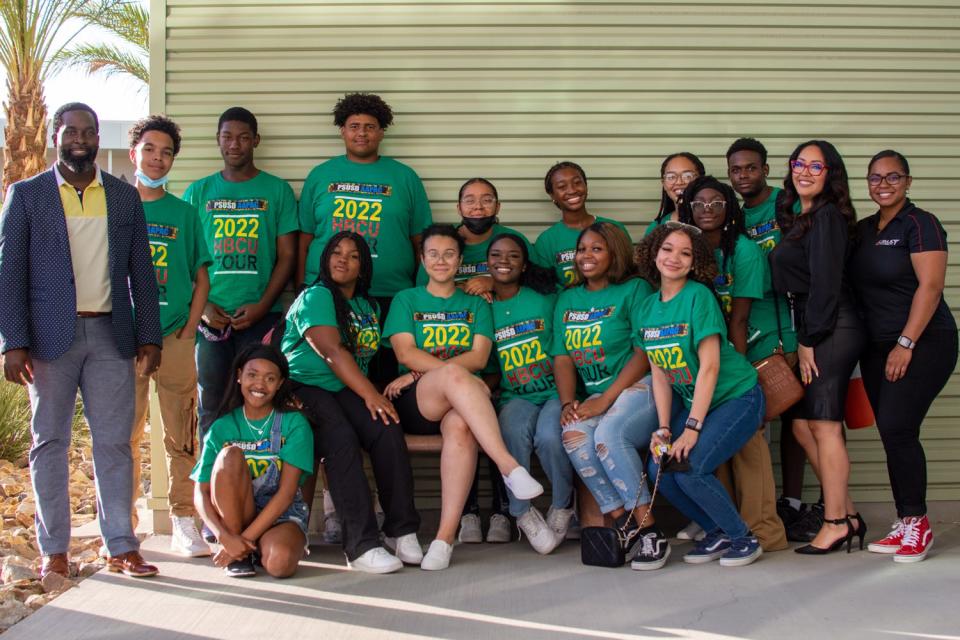
College tours make up one small part in the many ways that PSUSD spends supplemental funds from the state on programs aimed to help English learners, foster youth, low-income or unsheltered students. Like many school districts in California with a higher percentage of socioeconomically disadvantaged students, Palm Springs Unified is investing more than ever in academic support and tutoring as well as wellness and counseling. In many ways, the school district has become as much a social worker as an educator.
“Our student services department helps to identify the needs that students may have and hopefully connect them and their families with the right resources,” Feffer said.
In this area, finding the right resources can be a challenge. Still, students like Gacia prove that CVEP’s synopsis of the valley is not totally misleading — opportunity is out there. The daughter of Mexican immigrants — a housecleaner and an agricultural worker — Garcia is the first in her family to graduate college. Every year, bright students from each school district in the valley overcome significant financial and emotional adversity to attend some of the best schools in the nation.
But local, regional and state leaders know work needs to be done to make their stories the norm and not the heartwarming exception.
A few reasons to feel hopeful
First, we’re seeing encouraging signs of collaboration around issues like economic mobility and housing. Lift to Rise receives support and resources from dozens of sources, including major research philanthropies, research institutions and every city in the valley.
Similarly, OneFuture Coachella Valley, another local nonprofit, has built partnerships with each local school district to help boost college financial aid completion rates by nearly 50% over the last decade and change. It also organizes a major college fair and builds pathways between school districts and local employers offering good paying jobs in the trades. Also, thanks in large part to the deep pockets of the valley’s philanthropists, nonprofits like the Palm Springs Unified School District Foundation help sustain unusually large investments in the arts, music and other extracurricular activities for a school district of this size and socioeconomic standing.
Second, elected officials from the Coachella Valley are clamoring at every level of government for funds to build a standalone four-year university in the valley. Last year marked a major milestone toward that journey when the state Assembly allocated $79 million to CSUSB’s Palm Desert campus. And, College of the Desert has managed to raise nearly $1 billion from taxpayers in the last 20 years to build and improve campuses across the massive region it’s charged to cover.
Third, opportunities seem on track to improve for young people who are not college bound.
“Not every kid needs to go to college,” Gardner said. “Not every kid wants to go to college, and not every kid should go to college. There are a lot of wonderful, high-paying jobs that don't require a college degree.”
High schools across the valley have 47 career academies and pathways serving more than 8,000 students. Students on Career and Technical Education tracks might graduate high school at higher rates than their peers, some regional data suggests.
Encouragingly, many of these academies align with nascent industries that could blossom in the desert like renewable energy, healthcare and automotive technology.
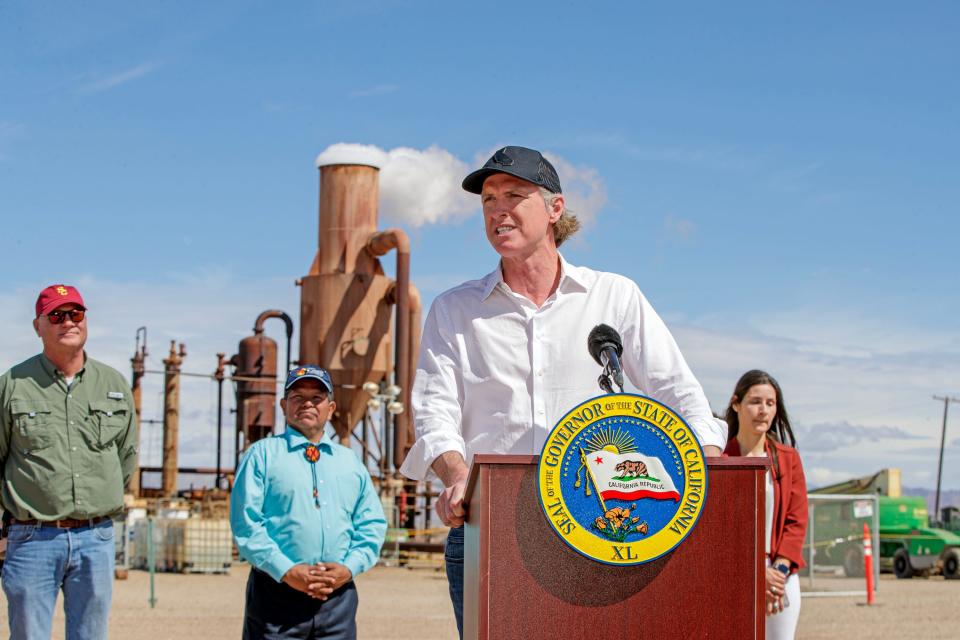
“The City of Palm Springs has been really excited about doing economic development in green energy,” Holstege said. “But the economic development doesn't just happen. It takes active investments by the state and the region.”
At the opposite end of the Coachella Valley, state leaders have hailed major investments in lithium extraction for electric-vehicle batteries as a power that could transform the regional economic landscape, hopefully in ways that benefit local workers.
PSUSD also leads the nation in drone education, a skill that can lead to careers in real estate, energy and construction.
But even without a radical shift in the types of industries attracted to the valley, Vaikona strongly believes this place can solve its housing and opportunity crises.
“I absolutely believe that hospitality can be an opportunity generator,” she said. “I absolutely believe it's not just a low-income job generator. I think it's possible with the sectors that are here to shift the economy and the systems that impact the lives of our community members to uplift folks instead of exploit them."
Desert Sun intern Ramon Salado Romo contributed to this story.
Jonathan Horwitz covered education for The Desert Sun from 2021 through 2023. Now that he's embarked on a new adventure, The Desert Sun is currently hiring a new education reporter. For more information, visit www.gannett.com/search-jobs.
This article originally appeared on Palm Springs Desert Sun: Palm Springs-area students are among most disadvantaged in California

